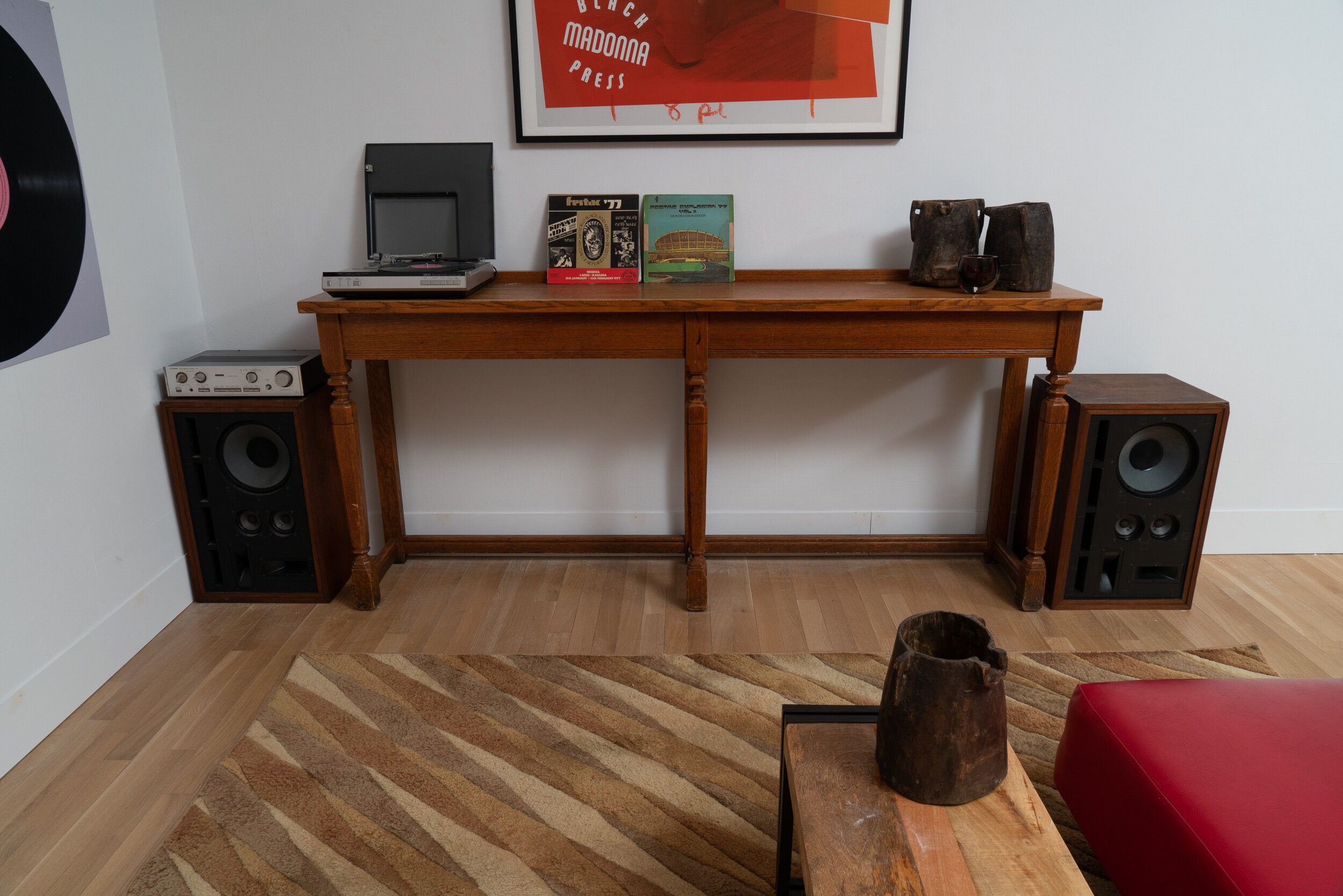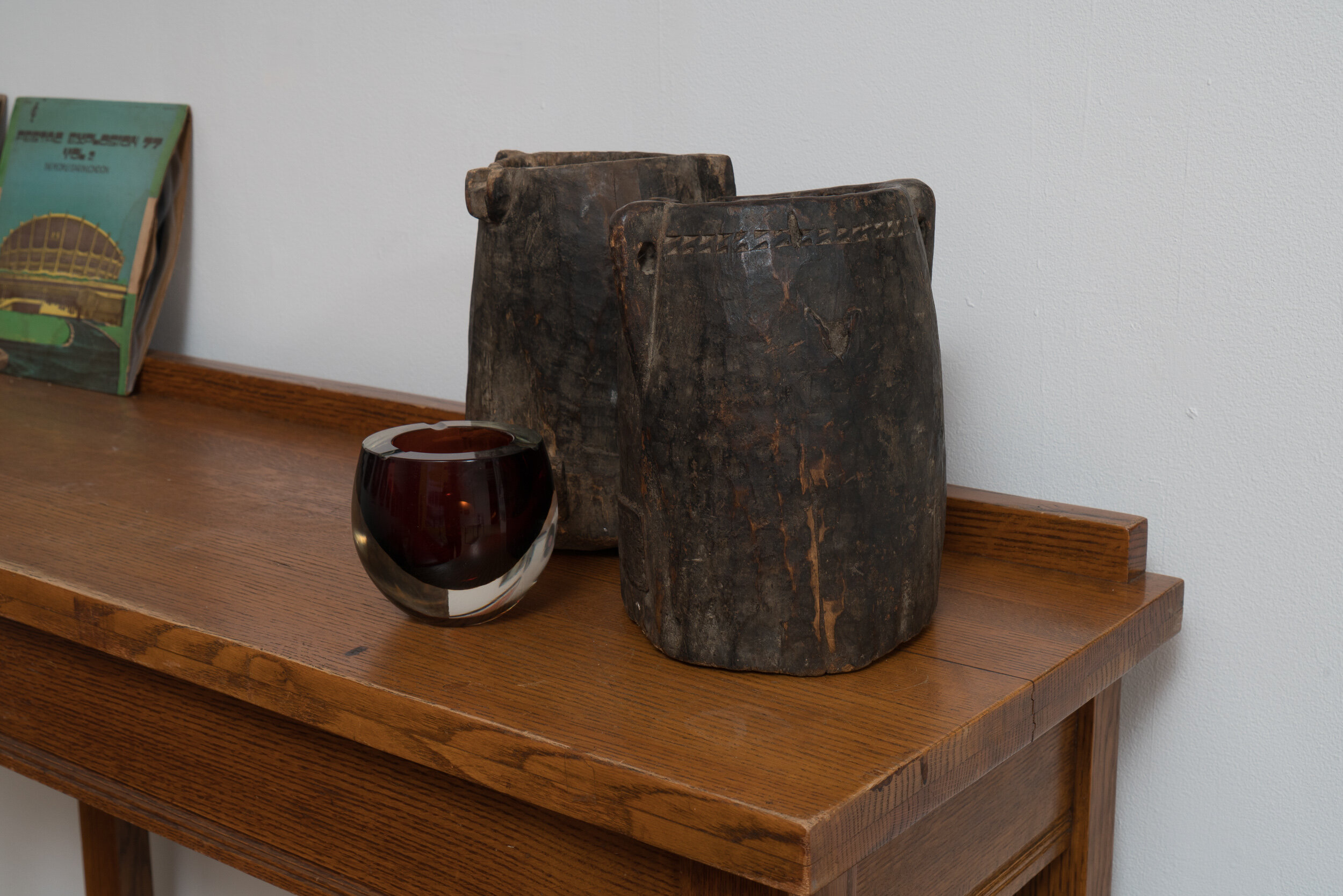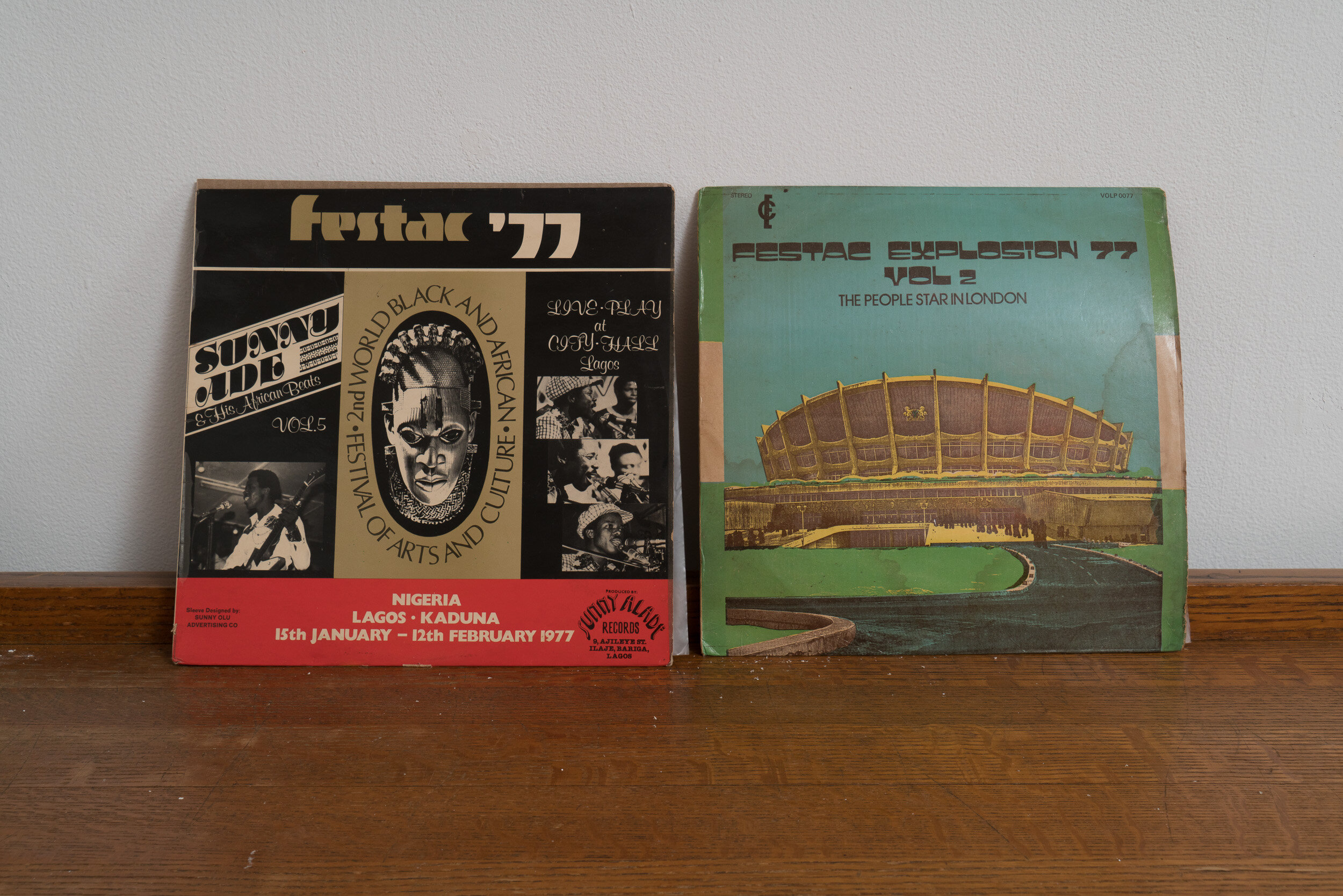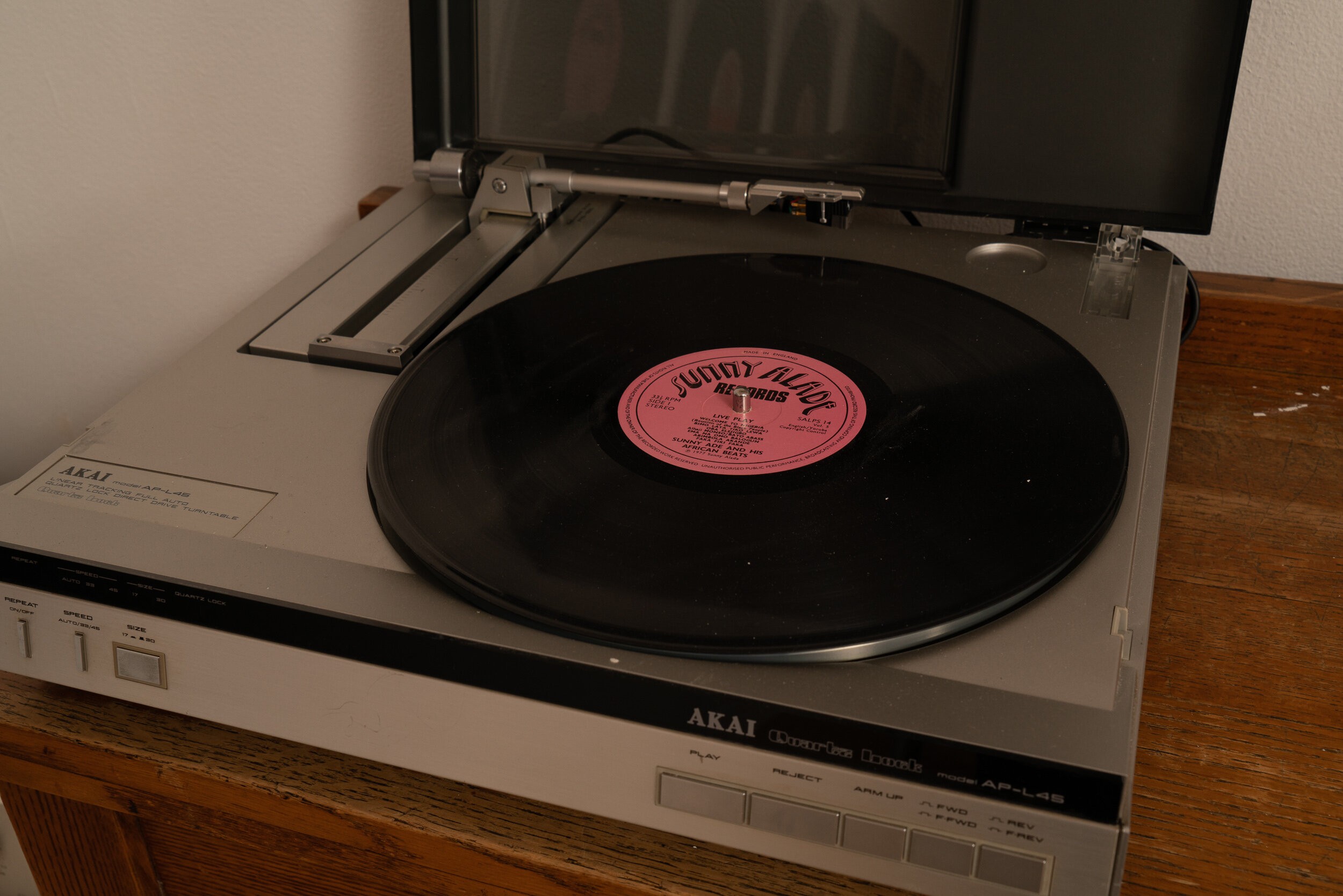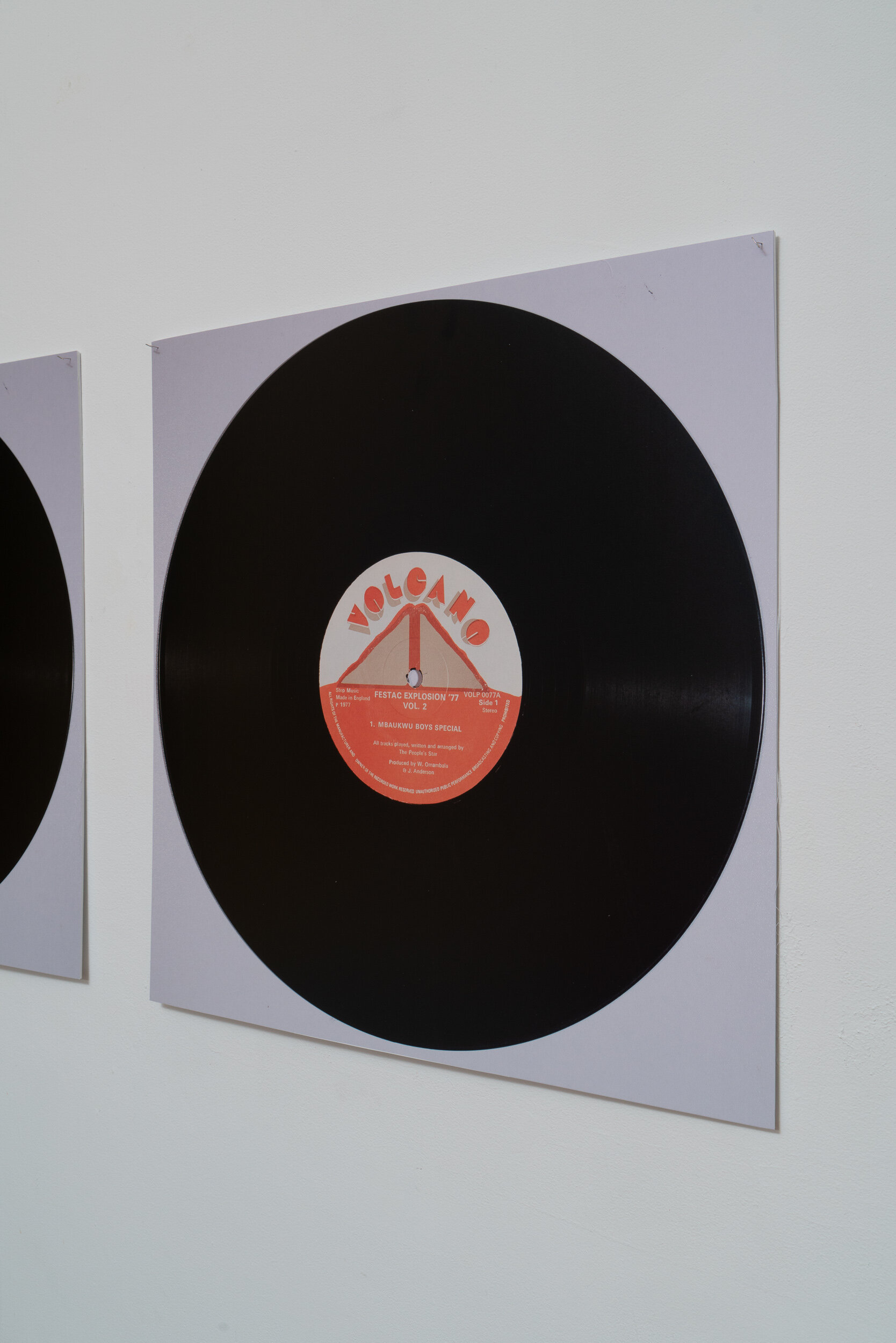Ayrika Hall & Cortlyn Kelly
The playlist features sounds popular throughout both Africa and the United States, thereby documenting the auditory experience of FESTAC ’77 and reflecting the growing pan-African identity manifested within US music. Additionally, this collection of songs highlights the sheer breadth of rhythmic styles and melodic techniques that varied across the continent of Africa and represented African musical identity at FESTAC. The purpose of the music playing throughout the exhibition is to enhance the overall experience of the work presented. While K. Kofi Moyo’s photographs serve as a visual aid, the music enables a fuller understanding of what it was really like to attend the festival.
This playlist testifies that there was no singular “African sound,” but a transcultural exchange and amalgamation of sounds, languages, and instruments. The swapping of influence was a two-way street, with both continents developing their own diverse individual sounds as well as integrating transcontinental blended styles. Through lyric and instrumental analysis, this playlist represents a narrative about Black artists having many influences across different genres and cultures, and through time.
The Story of Sound is structured so as to begin with songs embodying a pan-African theme that emerged during the late 1970s, then transitions into songs that were popular throughout the African continent during the late 1970s and early 1980s, including some by artists who performed at FESTAC, such as Stevie Wonder and Miriam Makeba. It begins with Bob Marley’s “Exodus,” a song that was released in 1977 and marked a shift in Black thinking transnationally, in particular a growing desire to depart toward a “motherland.” Following these sounds, US songs with an African influence, such as Stevie Wonder’s “Black Man,” show the connection between the continents both lyrically and stylistically. They exhibit similarities in instrumentation (for instance horns) and rhythmic tempo that emerged as a result of mutual influence between the African countries and the United States. The playlist concludes by showcasing the permanence of African influence by featuring African sounds that are commonly sampled in today’s house music and hip-hop, further exemplifying how music is a timeless and universal language.


